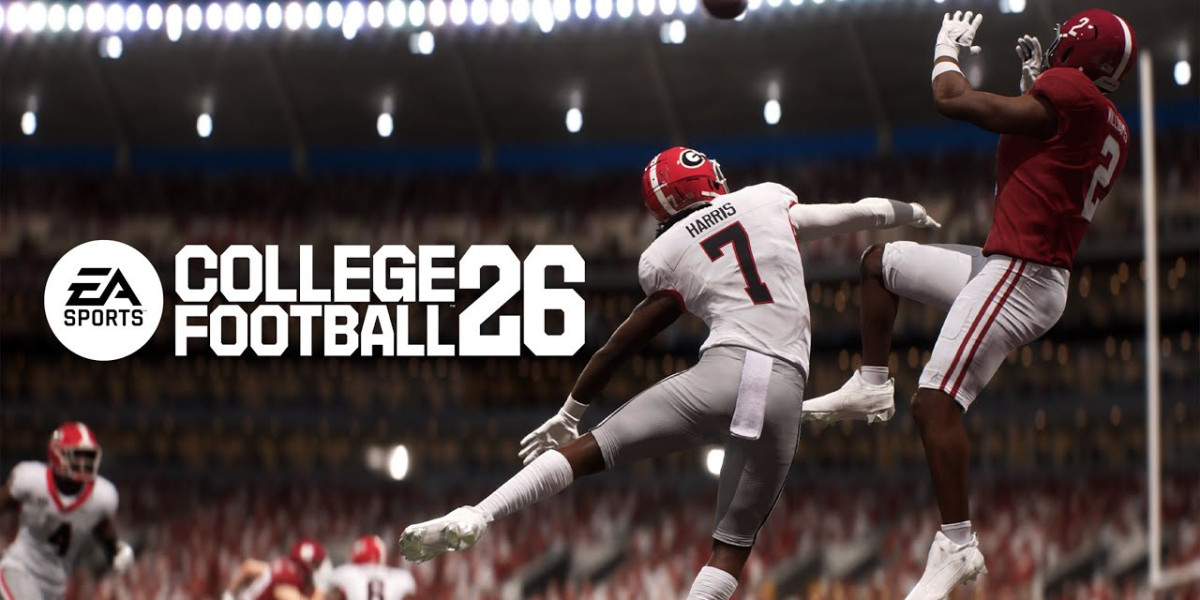Defense wins championships-and in College Football 26, mastering defense is the single biggest difference between winning and losing. Whether you're shutting down explosive offenses or forcing turnovers in clutch situations, a good defensive strategy can completely change the game. Here's a complete guide to building a lockdown defense, covering everything from blitzing and coverage adjustments to user control and goal-line stands. Adequate CUT 26 Coins will also help you a lot.
1. Build Pressure Into Every Scheme
The best defenses don't just sit back-they attack. Pressure is everything. In College Football 26, blitzing is especially powerful when executed correctly, forcing hurried throws and negative plays.
Start by using at least one blitz in your scheme-loop, edge, stunt, or overload. A great example is the Will Buck 3 Press out of the 3–4 Odd formation (Oregon's defensive playbook). It's incredibly consistent and sends your middle linebacker free for an untouched sack.
Here's how to run it:
Keep Auto Flip turned on-it works from either side.
Spread your defensive line (Left on D-pad + Up on Left Stick).
Control the linebacker in the "3 Rec Hook" zone and hover mid-field.
If you want pressure from just four rushers, drop the defensive end opposite the blitz into a hook, curl, or QB spy. The blitz still hits clean while covering scrambling lanes. Even better, if the offense runs an inside zone, flipping the blitz away from the running back allows your linebacker to shoot the gap and blow up the play in the backfield.
2. Learn Match Coverage-The Game's Strongest Defense
Traditional zone coverage struggles in CFB 26, and while man coverage is serviceable, match coverage is easily the most reliable option. It's a hybrid between zone and man coverage: defenders start in zone but convert to man when certain receivers run specific routes.
For example, Cover 4 Palms (and Cover 4 Quarters) automatically applies match rules. If the slot receiver runs a vertical route, the inside safety will "match on," converting to man coverage and staying glued to him all the way downfield.
To understand match logic, remember the receiver numbering system:
#1 = Outside receiver
#2 = Slot receiver
#3 = Running back (on that side)
Each defender has specific rules based on what each numbered receiver does.
Why it's effective: match coverage "sticks" to routes far better than standard zones, blanketing crossing and deep patterns.
Why it's risky: players can "bomb" it by exploiting delayed match reactions-like using a slot fade from trips formations. That's why you should mix and match coverage with other calls. Run it 25–30% of the time for maximum confusion and minimal vulnerability.
3. Master User Defense
Great defense in College Football 26 relies heavily on your user control. A skilled user can erase passing lanes and create turnovers.
Two advanced tips:
a. Use the Strafe Mechanic
Hold L2 / LT after the snap to keep your user squared to the quarterback. This reduces your movement speed but dramatically increases interception chances. You can toggle between sprinting and strafing-just ensure you're facing the QB as the ball is thrown.
b. Anticipate the Read Progression
Try to read the offense like a quarterback. If your opponent runs a deep crosser paired with a backside dig, stay with the crosser early, then break off and jump the dig when it comes open. You'll bait throws and secure more interceptions. This "route-switching" approach mimics how top players defend in real time.
4. Gap Shoot Every Shotgun Run
Stopping the run is about angles and timing. Here's a simple gap-shooting method that works against inside zones, counters, powers, and outside zones-all from shotgun.
Use a four-down lineman formation (like Nickel Over) and do the following:
Slant your defensive line outside (Left on D-pad + Up on Right Stick).
Use the linebacker on the same side as the running back.
When the ball is snapped, sprint through the A-gap between your two defensive tackles.
Against inside zones, you'll often shoot untouched into the backfield. Counters and power runs may engage a blocker, but you'll still clog the lane and force the play inside. Outside zones require pursuit-don't dive, just sprint and chase to the edge. This one setup neutralizes nearly every shotgun run concept once you've practiced the timing.
5. The Ultimate Goal-Line Defense
When your opponent lines up on the 1- or 2-yard line, they'll almost always switch to Goal Line offense. Don't match them in Goal Line 6-2-instead, use Goal Line 5-3, which adds a nose tackle crucial for stopping QB Sneak.
Call MLB Gap A in Goal Line 5-3 and make these pre-snap adjustments:
Pinch the D-line (Left on D-pad + Down on Left Stick).
Slant inside (Left on D-pad + Down on Right Stick).
Hover your user over the nose tackle.
This setup consistently stuffs QB Sneaks and dives, sometimes even before the handoff. For tosses or Power O plays, use your user to set the edge and force the runner back inside, where help awaits. Even if your opponent scores once in CUT 26 Coins for sale a while on a toss, this defense stops everything else cold-and that's all you need to win tight games.






